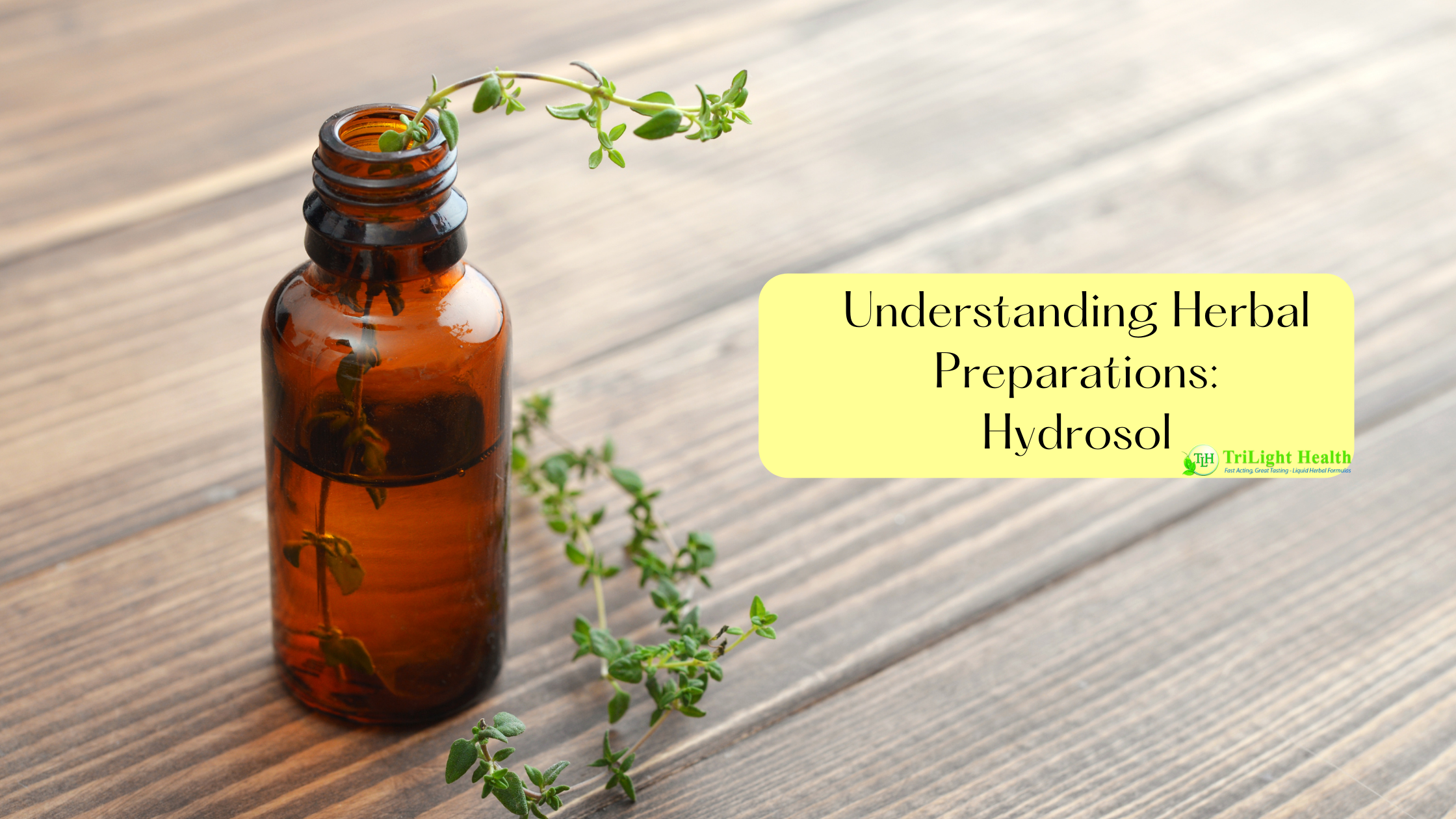Understanding Herbal Preparations- Hydrosol
Posted by TriLight Health on Jul 15th 2021
The popularity of essential oils has continued to rise over the last several years. Big box stores now sell them and they're finding their way into mainstream body care and cleaning products. Hydrosols are similar to essential oils but are not as widely known. Today we're going to learn all about hydrosols.

What are hydrosols?
The most basic definition of a hydrosol is a liquid plant extract. They are also called "flower water." You may have even used a hydrosol as a room or body spray without knowing it. A hydrosol can be made from many of the same plants that essential oils are. They are fully water soluable, unlike essential oils. Neroli and lavender are two of the most common hydrosols.
How is a hydrosol used?
Hydrosols can be used for:
- Aromatherapy
- Room spray
- Body spray
- Added to bath water or foot soak water
- Mixed into lotions
- Facial toner
- Makeup remover
- In place of water in homemade body care and cleaning products
Herbalists, aromatherapists and other practioners use them for many of the same therapuetic effects as their cooresponding essential oils. Because they're so much less concentrated they have a much more gentle and subtle impact. This makes them a good choice for infants, those who are sensitive, the elderly, and those who do not tolerate essential oils.
How are hydrosols made?
Unlike essential oils, hydrosols can be made at home. They are also generally much less expensive than essentail oils. Less plant material is needed and the process is much easier so the cost is lower.
A hydrosol is made with steam distillation from fresh or dried plant materials. The plant material is placed in a pot along with distilled water and a bowl. A lid is placed upside down with a bag on top that is full of ice. As the plant material simmers the steam condenses in the bowl thanks to the help from the ice. The bowl with then be filled with the hydrosol and ready for use.
This is, of course, a very basic description of how they are made. Before you try making your own make sure to find full instructions. Most hydrosols have a shelf-life of about two years and are best kept in the fridge. Make sure to research how to store your hydrosols.
Learn more:





